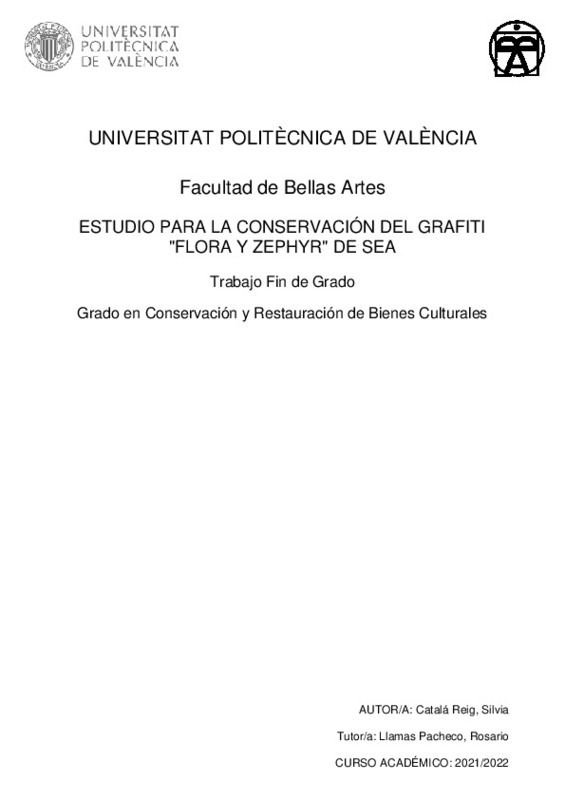|
Resumen:
|
[ES] En este trabajo de fin grado se habla del origen del graffiti, centrándose en la historia del arte urbano en España, y posteriormente en la historia y evolución en la ciudad de Valencia.
En el capítulo del graffiti ...[+]
[ES] En este trabajo de fin grado se habla del origen del graffiti, centrándose en la historia del arte urbano en España, y posteriormente en la historia y evolución en la ciudad de Valencia.
En el capítulo del graffiti en Valencia se analiza cómo los artistas ven este arte y cómo la sociedad lo juzga, habiendo personas que lo consideran vandalismo o por contra, arte. Además, se dan a conocer algunos de los artistas actuales más influyentes y se estudia el festival de arte urbano de Fanzara, el pueblo castellonense considerado la capital del arte urbano.
Seguidamente, aportamos la entrevista con el artista que centra nuestro estudio práctico, donde explica su trayectoria y evolución, su punto de vista respecto al arte urbano y habla sobre la obra tratada en este trabajo, ¿Flora y Zephyr¿, comentando uno de los aspectos más importantes de esta: la idea que quiere transmitir.
Respecto a este último apartado, se analiza en profundidad la obra, el plano conceptual y el plano material. En base a lo que el artista comenta en la entrevista, ha documentado de forma exhaustiva su idea y lo que quiere transmitir con ella, además de cómo el espectador percibe su arte. Así se ha determinado el estado de conservación de la obra en concreto y cómo este va evolucionando durante su único año de vida, explicando los agentes de deterioro que la han afectado directamente.
Por último, se aportará un método de conservación. Debido a que es una obra efímera se plantea desde una cuestión: ¿Cómo se puede legar la obra a las futuras generaciones?
[-]
[EN] This final degree project talks about the origin of the graffiti, focusing on the history of urban art in Spain and subsequently on the history and the evolution in the city of Valencia.
In the graffiti in Valencia ...[+]
[EN] This final degree project talks about the origin of the graffiti, focusing on the history of urban art in Spain and subsequently on the history and the evolution in the city of Valencia.
In the graffiti in Valencia chapter it¿s analyzed how the artists see this art and how the society judge it, being people that consider it vandalism or on the contrary, art. Moreover, in this chapter they are disclosed some of the most influential current artists and we study the Fanzara urban art festival, the Castellón town considered the capital of urban arts.
Following that, the interview with the artist who centers our practical study it¿s provided, where he explains his career path and evolution, his point of view regarding urban art and he also talks about the artwork covered in this project, ¿Flora y Zephyr¿, commenting one of its most important aspects, the idea that wants to transmit.
Regarding this last paragraph, the depth of this artwork as well as the conceptual level and the material level it¿s analyzed. Based from what the artist comments in the interview, he has exhaustively documented his idea and what he wants to transmit with it, besides the fact of how the viewer perceives his art. This way it has been determined the precise state of conservation and how it has been evolving during his only year of life, explaining the agents of deterioration that have been affecting it directly.
Finally, a conservation method will be added. Due to the fact that it¿s an ephemeral piece of art, a question arises: How can the artwork be passed on to the future generations?
[-]
|







